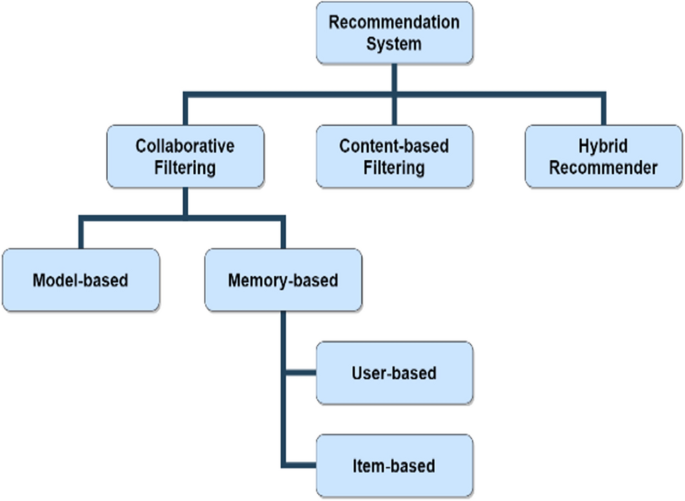
Recent advances in Internet applications have facilitated information spreading and, thanks to a wide variety of mobile devices and the burgeoning 5G networks, users easily and quickly gain access to information. Great amounts of digital information moreover have contributed to the emergence of recommender systems that help to filter information. When the rise of mobile networks has pushed forward the growth of social media networks and users get used to posting whatever they do and wherever they visit on the Web, such quick social media updates already make it difficult for users to find historical data. For this reason, this paper presents a social network-based recommender system. Our purpose is to build a user-centered recommender system to exclude the products that users are disinterested in according to user preferences and their friends' shopping experiences so as to make recommendations effective. Since there might be no corresponding reference value for new products or services, we use indirect relations between friends and “friends’ friends” as well as sentinel friends to improve the recommendation accuracy. The simulation result has proven that our proposed mechanism is efficient in enhancing recommendation accuracy.
With the development of modern technology and the wide-spread use of mobile devices, people nowadays have convenient access to information. Therefore, recommender systems are extensively adopted in various commercial and educational fields. Whenever a user is interested in a specific product or service, he or she may first ask his/her friends about their shopping experiences and then find more information on the Internet [1]. Nevertheless, it is very time-consuming to read customer reviews of all items listed in the search results list. For example, to find the best restaurants in the designated area, users may follow websites like Google Map to check the comments and star ratings one by one. However, those reviews with star ratings but no comments will be doubted.
Recommender systems have been applied in various fields, like tourism industry, food industry, and film industry and so on [2, 3]. There are many restaurants and movies to choose but not everyone meets the need because each person has different preference: it could be the prices, the brands or the specifications. In such a context, we began to think if we could build a user-centered, personalized recommender system.
Modern recommendation systems are becoming more and more complex with the improvement of technology, and they require a lot of resources [4, 5] and privacy issues. Different phases in the recommendation process also may be at risk for private data exposure [6]. For example, in the user modeling phase, information of every user will be accessed to confirm each one’s identity.
In this paper, we propose a novel recommender system that integrates with social network websites, like Facebook, Twitter and Yelp, to particularly deal with the cold-start problem. While users share information with friends, not only users facilitate the spread of messages and help promote the products or services or attract more consumers, but also the recommender system learns user preferences based on users or their friends’ most recent posts and relevant shopping experiences [7, 8]. According to such information, even in a cold-start condition without rating or review for new products or services, the recommender system still can make follow-up recommendations, and users can save time to find ideal targets. Through the newly established review procedure, users can find suitable products or services more quickly and accurately [9,10,11].
This paper is organized as follows. “Background and related work” section describes the background and related work, including recommender systems, Web 2.0 and social networks. “Methods” section states the problem and how to solve it. “Analysis” section gives the experiment and methodology, and results and discussion are presented in “Result and discussion” section. The conclusion is given in “Conclusion” section.
This section introduces recommender systems, Web 2.0 and social networks.
According to Resnick and Varian [12], recommender systems, for user convenience, can filter information based on user preferences and provide information to users that they might be interested in. Schafer et al. [13] moreover mentioned three advantages of recommender systems: Converting Browsers into Buyers, Increasing Cross-sell, and Building Loyalty. Generally, traditional recommender systems require explicit or implicit user interactions. Explicit method relies on explicit user ratings while implicit ones are based on implicit observations of users’ behaviors. The Table 1 compares their differences.


In recent years, methods like transfer learning [19], active learning [20], and zero-shot learning [21] are often used to solve cold-start problems.
Instead of being identified by a software standard, Web 2.0, which is considered as a platform, refers to special user-centered web applications that enable information sharing and collaborative works on the Internet. Typical Web 2.0 applications include RSS, blogs, Wiki, social networking websites and so on. The differences between Web 1.0 and Web 2.0 are shown in the Table 3.
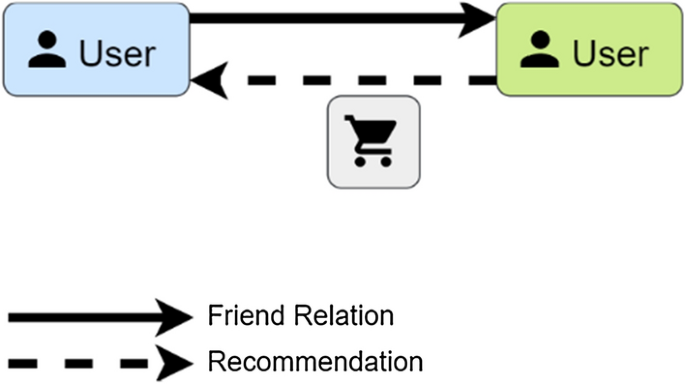
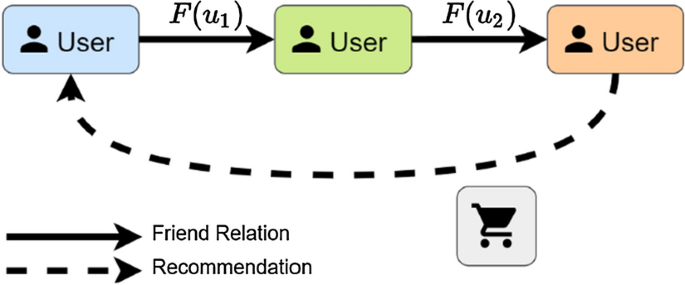
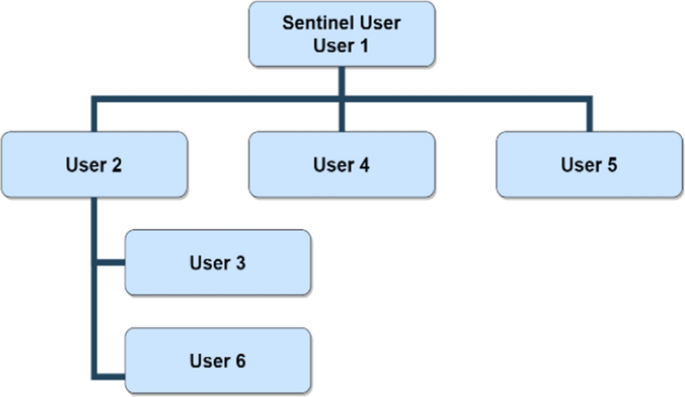
The system framework (Fig. 6) consists of three parts: (1) data acquisition, including user interest analysis and product analysis; (2) personalized recommender system, including direct and indirect relations; and (3) list of recommendations for users.
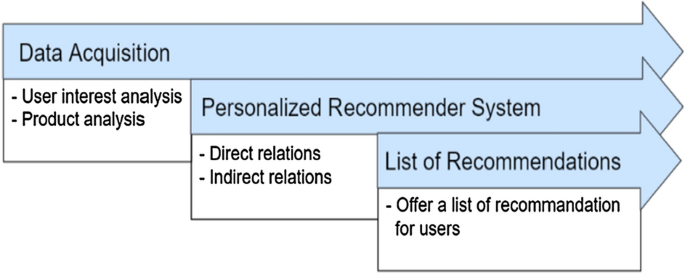
Our method includes the following steps: (1) gather user data and user review, (2) select the business category (Select Food), (3) select the food types (5 types of cuisines), (4) test the recommendation data, and (5) analyze the recommendation data. The procedures flowchart were presented in Fig. 7.
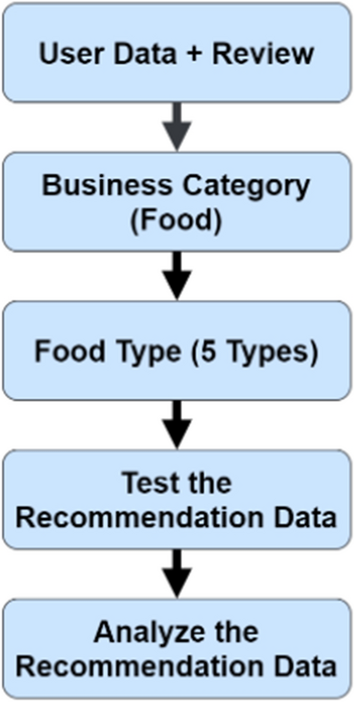
The simulation is based on the crowd-sourced reviews from the Yelp Dataset (Link: https://www.yelp.com/dataset/).
Yelp collects reviews for not only foods but also businesses. Currently, there are 1293 kinds of businesses in total based on the Yelp Dataset. Restaurants in the “Food” category, which occupies most of the reviews, and there are about 140 labels defined by Yelp which will be the focus of our simulation.
All parameters in each category are weighted to compute the popularity weight so that users can find the item with the top R(c).
There are two weighting variables: (1) popularity of place, (P)P: users’ desired restaurants are usually hot attractions or iconic spots, (2) places that have been visited by friends, F(P): users are also interested in the places which friends have already visited. Other parameters include: